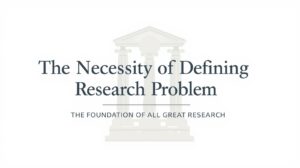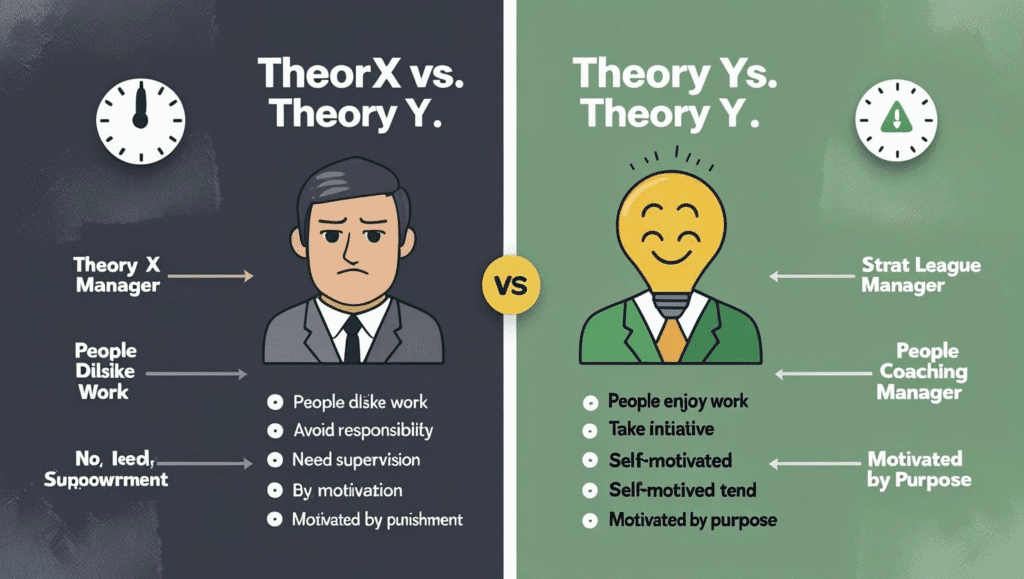The Necessity of Defining a Research Problem: The Foundation of All Great Research
In the world of academic and professional inquiry, a well-defined research problem is the single most important element. It acts as the foundation for a skyscraper: without a solid, carefully constructed base, the entire structure—no matter how elaborate the methodology or extensive the data—is destined to be unstable. The process of defining a research problem is an act of intellectual rigor that transforms a vague curiosity into a focused, manageable, and meaningful investigation.
If I had an hour to solve a problem and my life depended on the solution, I would spend the first 55 minutes determining the proper question to ask, for once I know the proper question, I could solve the problem in less than five minutes.
— Albert Einstein (paraphrased)
This sentiment perfectly captures the essence of this critical first step. Before a single piece of data can be collected or a single page of literature reviewed, the problem must be crystal clear. The difference between a well-defined and a poorly-defined problem is the difference between a successful research project and a failed one.
Poorly-Defined Problem
“I want to study the effects of remote work in the US.”
- Vague: What “effects”? On whom?
- Unfocused: Leads to collecting endless, irrelevant data.
- Unfeasible: Impossible to cover in a single study.
Well-Defined Problem
“To what extent does the frequency of remote work (days per week) correlate with reported job satisfaction and team cohesion among employees at mid-sized US tech companies?”
- Specific: Clearly identifies variables and population.
- Focused: Guides specific data collection methods.
- Feasible: Can be reasonably investigated.
The 5 Core Necessities of Defining a Research Problem
Defining the problem isn’t just a preliminary task; it is a foundational necessity that serves several critical functions throughout the entire research lifecycle.
-
1. It Provides Direction and Focus
A clear research problem acts as a compass for the entire project. It guides every subsequent decision, from the literature you review to the data you collect and the analysis you perform. Without this guiding light, a researcher can easily get lost in a sea of interesting but ultimately irrelevant information. The problem statement constantly pulls the focus back to the core objective, ensuring that all efforts are purposeful and contribute directly to answering the central question. It prevents “scope creep,” where a project becomes bloated with tangential inquiries that dilute its impact.
-
2. It Establishes Scope and Boundaries
No research project can investigate everything. A well-defined problem sets the parameters of the study, clearly stating what will be included and, just as importantly, what will be excluded. This is essential for making the research project manageable and feasible. It defines the specific population, timeframe, geographical location, and variables of interest. By setting these boundaries, the researcher can realistically plan the resources needed (time, funding, personnel) and execute the study within those constraints.
-
3. It Justifies the Research
In both academic and corporate settings, research requires resources. A compelling problem statement answers the crucial “so what?” question. It articulates the significance of the study, explaining why the problem is worth investigating. It does this by highlighting a gap in the existing literature, addressing a pressing real-world problem, or challenging a prevailing theory. This justification is essential for securing research grants, gaining approval from an academic committee, or getting buy-in from corporate stakeholders.
-
4. It Guides the Choice of Research Design
The way a problem is framed dictates the entire structure of the investigation. A problem focused on exploring a new phenomenon will require a qualitative design (like interviews or case studies). A problem aimed at measuring the relationship between two variables will require a quantitative, correlational design. A problem seeking to determine a cause-and-effect relationship will necessitate an experimental design. A vague or poorly-defined problem makes it impossible to select the appropriate methodology, often leading to a mismatch between the question and the method used to answer it, which invalidates the results.
-
5. It Forms the Basis for the Conclusion
Ultimately, the conclusion of any research paper or report must directly address the problem that was initially posed. The problem statement sets up the question, and the conclusion provides the answer based on the evidence gathered. Without a clear, focused question at the beginning, it’s impossible to arrive at a meaningful, focused answer at the end. The problem statement is the benchmark against which the success and validity of the entire research project are measured.
Conclusion: The Most Critical Step
Defining a research problem is not a simple formality; it is the most critical phase of the research process. It is an intellectual journey that requires deep thought, a thorough review of existing knowledge, and a precise command of language. By investing the necessary time and effort into this foundational step, a researcher transforms a broad area of interest into a specific, manageable, and significant inquiry, setting the stage for the discovery of new and valuable knowledge.
Frequently Asked Questions
A common acronym used in academic and medical research is FINER:
- Feasible: Can it be done with the available resources (time, money, expertise)?
- Interesting: Is it interesting to the researcher and the field?
- Novel: Does it confirm, refute, or extend previous findings? Is it a new topic?
- Ethical: Can it be studied without violating ethical principles?
- Relevant: Is it relevant to scientific knowledge, clinical practice, or public policy?
Research problems can originate from several sources. They can come from observing a gap in the existing literature (something that hasn’t been studied), a real-world problem in your profession or community, a contradiction between two or more existing theories, or even from personal experience and curiosity. The key is to move from a general topic to a specific, researchable problem.
They are closely related. The research problem is a broader statement of an issue or difficulty that needs to be addressed (e.g., “The problem is that job satisfaction is declining among remote tech workers”). The research question(s) are the specific, focused, and answerable questions you will investigate to address that problem (e.g., “What is the relationship between the number of weekly virtual meetings and the level of job satisfaction among remote tech workers?”). The problem is the destination; the questions are the specific turns you’ll take on the map to get there.


